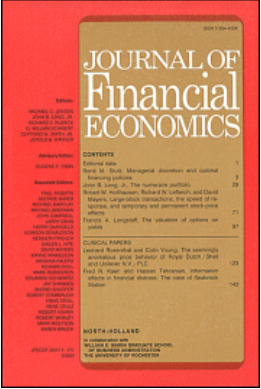Optimal policy for behavioral financial crises
IF 10.4
1区 经济学
Q1 BUSINESS, FINANCE
引用次数: 0
Abstract
Should policymakers adapt their macroprudential and monetary policies when the financial sector is vulnerable to belief-driven boom-bust cycles? I develop a model in which financial intermediaries are subject to collateral constraints, and that features a general class of deviations from rational expectations. I show that distinguishing between the drivers of behavioral biases matters for the precise calibration of policy: when biases are a function of equilibrium asset prices, as in return extrapolation, new externalities arise, even in models that do not have any room for policy in their rational benchmark. These effects are robust to the degree of sophistication of agents regarding their future biases. I show how time-varying leverage, investment and price regulations can achieve constrained efficiency. Importantly, greater uncertainty about the extent of behavioral biases in financial markets reinforces incentives for preventive action.
行为金融危机的最优政策
当金融部门容易受到信念驱动的繁荣-萧条周期的影响时,政策制定者是否应该调整宏观审慎政策和货币政策?我开发了一个模型,在这个模型中,金融中介机构受到抵押品约束,并以偏离理性预期的一般类别为特征。我指出,区分行为偏差的驱动因素对于政策的精确校准很重要:当偏差是均衡资产价格的函数时,就像在回报外推中一样,新的外部性就会出现,即使在那些在其理性基准中没有任何政策空间的模型中也是如此。这些效应对代理人关于其未来偏见的复杂程度是稳健的。我展示了时变杠杆、投资和价格监管是如何实现有限效率的。重要的是,金融市场行为偏差程度的不确定性加大了采取预防措施的动机。
本文章由计算机程序翻译,如有差异,请以英文原文为准。
求助全文
约1分钟内获得全文
求助全文
来源期刊

Journal of Financial Economics
Multiple-
CiteScore
15.80
自引率
4.50%
发文量
192
审稿时长
37 days
期刊介绍:
The Journal of Financial Economics provides a specialized forum for the publication of research in the area of financial economics and the theory of the firm, placing primary emphasis on the highest quality analytical, empirical, and clinical contributions in the following major areas: capital markets, financial institutions, corporate finance, corporate governance, and the economics of organizations.
 求助内容:
求助内容: 应助结果提醒方式:
应助结果提醒方式:


